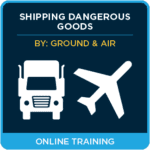This post was originally published in August 2015 and has been updated in December 2020 for accuracy.

Like most regulations based on the UN Recommendations for the Transport of Dangerous Goods, Canada’s “Transportation of Dangerous Goods Regulations” (TDG) includes a number of exemptions. These provide easier and more cost-effective ways for shipping low-risk materials. However, each exemption needs to be carefully studied. If you don’t comply with all the requirements, you are not entitled to any part of the exemption.
One of the most misunderstood exemptions in TDG is found in section 1.16, the “500 Kilogram Exemption.” The provisions in this section originated in a long-ago series of permits intended to make the shipment of small quantities of dangerous goods easier. Over the years, changes to this section have reduced its effectiveness; it still may be a helpful exemption in certain specific cases, but it must be used appropriately.
The first myth about the 500-kilogram exemption is that it is a total exemption from all requirements of TDG. This is far from the truth. At best, the exemption relieves the shipper from Part 3 (Documentation), Part 4 (Dangerous Goods Safety Marks), and Part 5 (Means of Containment). All other requirements of TDG will still apply. This includes, for example, the requirement that the carrier and all handlers must be TDG-certified. At one point, receivers were exempted from Part 6, Training, but this relief was removed in an amendment several years ago.
Obviously, the exemption only applies if the total of all dangerous goods on board does not exceed 500 kilograms. Although section 1.16 itself does not mention it directly, Transport Canada has reportedly interpreted that this quantity would include limited quantities under section 1.17 and other exempted goods. So, if you have 300 kilograms of regulated material and 400 kilograms of limited quantities on board, you could not use this exemption.
Package size is restricted to no more than 30 kilograms for classes other than class 2. Packaging for liquids and solids does not have to be UN specification, but containers of gases must meet the standards set out in Part 5, Means of Containment. Non-specification packaging must be designed, constructed, filled, closed, secured, and maintained so that it will not leak during normal conditions of transport.
Once we check the total weight of the shipment and the weight of the individual packages, we can move on to hazard communication. The packages themselves must be marked and labeled as regular dangerous goods as per Part 4; however, they may alternatively display the labels required by regulations under either the Hazardous Products Act or the Pest Control Product Act. This would allow packages not to show TDG marks and labels if a WHMIS label or a “Pest Control Product Regulation” label can be seen on the outside.
Note that when this section was first written, labels for hazardous consumer products would also be acceptable since the “Consumer Chemicals and Containers Regulations” (CCCR 2001) came under the Hazardous Products Act. However, the CCCR 2001 was afterwards moved to the Canada Consumer Product Safety Act. Transport Canada has never updated section 1.16 to address this, so consumer labels should not be used as a way of satisfying section 1.16.
Next, we come to shipping document requirements. Here’s where the exemption still gives some useful relief; instead of a normal shipping document, with its many requirements, the shipping paper under the 500-kilogram exemption merely needs to include the class of dangerous goods and the number of means of containment for that class. The wording for this is given specifically as “Class X, number of means of containment Y.” The regulation gives an example of a shipment with ten packages of Class 3 and twelve packages of Class 8, as follows:
Class 3, number of means of containment, 10
Class 8, number of means of containment, 12
Other requirements, such as total weight on board and the date of shipment, do not apply. This makes it useful, for example, for goods such as work supplies that are kept permanently on a vehicle but do not qualify for other exemptions. The document can be written up for the standard quantity of supplies and left in the vehicle permanently.
Since the shipment is exempted from all of Part 4, Dangerous Goods Safety Marks, placards are not required, even if the load contains goods that would require placarding for any amount.
Not all types of dangerous goods can be transported under this exemption. Section 1.16(2) lists various classes of goods that cannot use this exemption. This includes most explosives (except for those in Class 1.4S), radioactives, infectious substances, toxic gases, and liquid toxic materials in Packing Group I, Class 4.2 or 4.3 materials in Packing Group I, Class 2.1 gases if in cylinders exceeding 46 Litres, and Class 5.2 materials that are not allowed to be transported as limited quantities. Also, any material that requires an Emergency Response Assistance Plan (ERAP) or which requires control and emergency temperatures cannot be shipped under these provisions.
To sum up, this is an oddly specific set of conditions for an exemption, which can probably be traced back to its origin as a permit designed for a specific situation. Furthermore, some of the benefits of using it have been removed over time. But if you’re looking for a way, for example, to put several 20 Litre pails of paint in a vehicle, this would remove the requirement for you to use UN specification packaging or to complete a full shipping document. You wouldn’t even need to put TDG labels on the pails if they displayed WHMIS labels. So for some shippers, these benefits still make section 1.16 worth using.
Remember, of course, that simply because your shipment totals less than 500 kilograms, you do not have to use these provisions; like most exemptions, section 1.16 is optional.
Do you have any questions about this or other exemptions in the TDG Regulations? Contact ICC Compliance Center here at 888-442-9628 (U.S.) or 888-977-4834 (Canada), and ask for one of our regulatory experts. We can help you find the easiest and most efficient method to ship your goods.
Stay up to date and sign up for our newsletter!
We have all the products, services and training you need to ensure your staff is properly trained and informed.
 Canadian TDG Publications |
 Shipping Small Quantities by Ground (49 CFR) and Air (IATA) – Online Training |
 Shipping Dangerous Goods in Small Quantities by Ground (TDG) and Air (IATA) – Online Training |






 ICC USA
ICC USA ICC Canada
ICC Canada